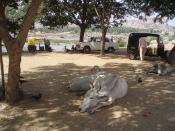Introduction:
I.R. Mehra, executive director of the Indian Vanaspati Producers Association, said the industry has had to cope with the entry of Vanaspati from Nepal, which under the terms of a bilateral deal has been allowed to export up to 100,000 metric tons of the palm oil-based product duty free each year for some time now. Vanaspati is a hydrogenated form of palm oil that is a popular cooking fat in India. Crude palm oil, the main ingredient for Vanaspati, carries an import duty of 80% in India while various forms of refined palm oils carry duties of 90%.
The contrasting tax regimes have meant that ultimately, duty-free Vanaspati imports from Nepal have been far cheaper than those produced in India, thus hurting domestic players. "The traders from Nepal sell into India at far below our cost price. This has left the industry totally stranded," Mehra said. The total volume of Vanaspati entering India from Nepal, therefore, is estimated around 200,000 tons (including smuggled) every year.
"So, we get a total of about 400,000 tons of imports a year in a market of 1.3 million to 1.4 million tons," he said. The above case illustrates the effects of free trade agreements on common man and the policy of government to protect the inefficient producers producing goods at a higher price because of their inefficiency. (Benjamin Low, 2005)
Singapore and Indian Economic scenario:
The economic growth of the Indian economy has been very fast and sustaining. The value of gross domestic product of the economy has reached at US $ 785.5 billion (2005).The GNI per capita has reached at current US $ 720 in the same year. The average annual growth rate of GDP between 1965 and 2005 was at 8.6 percent. Real per capita GDP rose about eight-fold, from around...


